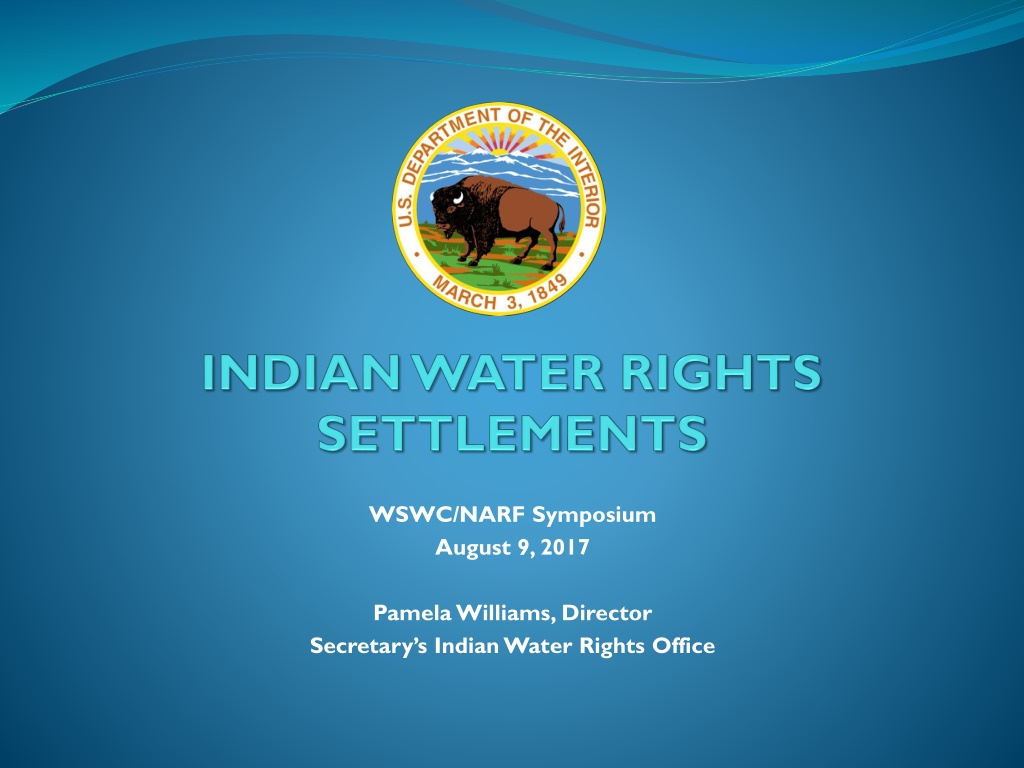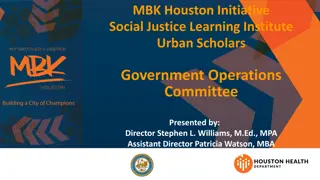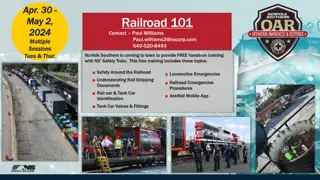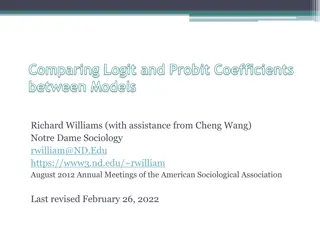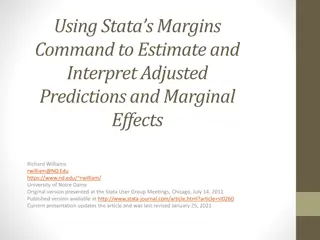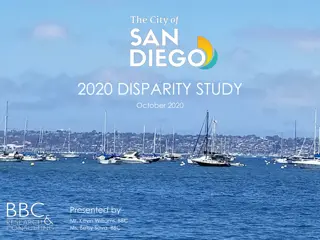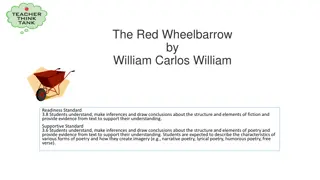Indian Water Rights Settlements: History and Development
Explore the historical background and legal foundations of Indian water rights, including the role of the Federal Government, the establishment of reserved water rights, and the shift towards negotiated settlements in resolving disputes. Learn about completed settlements and the ongoing process of addressing Indian water rights conflicts.
Uploaded on Dec 07, 2024 | 0 Views
Download Presentation

Please find below an Image/Link to download the presentation.
The content on the website is provided AS IS for your information and personal use only. It may not be sold, licensed, or shared on other websites without obtaining consent from the author.If you encounter any issues during the download, it is possible that the publisher has removed the file from their server.
You are allowed to download the files provided on this website for personal or commercial use, subject to the condition that they are used lawfully. All files are the property of their respective owners.
The content on the website is provided AS IS for your information and personal use only. It may not be sold, licensed, or shared on other websites without obtaining consent from the author.
E N D
Presentation Transcript
WSWC/NARF Symposium August 9, 2017 Pamela Williams, Director Secretary s Indian Water Rights Office
Indian Water Settlements History and legal underpinnings Existing Indian water settlements Settlement elements and benefits The Federal settlement process Federal legislation and costs 2
Historic Background Basis of Indian water rights is the Federal reserved water rights doctrine established in United States v. Winters in 1908 establishment of a reservation impliedly reserves the amount of water necessary to accomplish the purposes of the reservation (homeland purpose) past, present, and future uses included rights are not lost by non-use governed by Federal and not state law held in trust by the Federal Government 3
Historic Background (contd) Despite the Winters decision, Indian water rights were largely left undeveloped and unprotected in the decades after 1908 By contrast, Federal policy and expenditures supported extensive development of water resources to benefit non-Indian communities across the West 4
Early Efforts to Establish Indian Water Rights Winters rights were a cloud over western non-Indian water rights The push to quantify Winters rights began in the 1960s Disputes over the applicability of the McCarran Act to Indian reserved water rights created a rush to litigate but the results were disappointing 5
Settlement Era Begins In the 1970s, tribes, states, local parties, and the Federal Government began questioning the utility of litigation as the way to resolve Indian water rights disputes Negotiated settlements, rather than protracted litigation, became the preferred approach to resolving Indian water rights conflicts 6
Completed Settlements Department of the Interior (DOI) has completed 36 Indian water rights settlements since 1978 Congressionally Approved 32 Administratively Approved by DOI & Department of Justice (DOJ) 4 7
Indian Water Rights Settlements with Federal Legislation, by State AZ NM NV MT CA UT ID CO OK FL 0 1 2 3 4 5 6 7 8 9 10
Number of Indian Water Rights Settlements by Year of Federal Legislation 4 3 2 1 0 1994 1978 1982 1987 1988 1990 1992 1999 2000 2003 2004 2008 2009 2010 2014 2016
Active Indian Water Rights Settlement Negotiations by State AZ NM MT CA NV UT ID WA OR 0 1 2 3 4 5 6 7 8 9 10
Settlement Negotiations Settlement negotiations frequently evolve from litigation but can also occur without litigation DOI provides technical and other assistance to the tribes Settlement agreements vary from multi-party agreements to compacts among the state, tribe, and Federal Government When agreement is reached, parties typically seek Federal approval in the form of Federal legislation 11
Benefits of Settlements Wet Water Provide wet water to tribes; litigation provides paper water Win-Win Provide water to tribes while protecting existing non-Indian water users Local Solutions Allow parties to develop and implement creative solutions to water use problems based on local knowledge and values 12
Benefits of Settlements (contd) Certainty and Economic Development Provide certainty to tribes and neighboring communities, support economic development for tribes, and replace historic tension with cooperation Trust Responsibility Consistent with the Federal trust responsibility and Federal policy of promoting Indian self- determination and economic self-sufficiency 13
Indian Water Rights Settlements: Economic Analysis Objective: An analysis of the economic impacts of enacted Indian water settlements that accrue to all parties to the settlement. The study will measure net benefits and will help inform the Indian Water Rights Settlement Program Study data collection and analysis currently taking place 14
Federal Settlement Process The Working Group on Indian Water Settlements Established by the Department of the Interior in 1989 Comprised of all Assistant Secretaries and the Solicitor Responsible for making recommendations to the Secretary of the Interior regarding water settlements and settlement policies 15
Federal Settlement Process (contd) Presided over by a Chairman who is selected by the Secretary. Currently the Chair is Alan Mikkelsen who also serves as Deputy Commissioner of Reclamation Secretary s Indian Water Rights Office (SIWRO), under the direction of the Chairman of the Working Group, coordinates and assists with Indian water rights settlements and interfaces with settlement teams in the field Upon direction from the Working Group, SIWRO establishes Federal teams to lead settlement negotiations and implementation 16
Federal Settlement Process (contd) Teams are comprised of representatives from: Bureau of Indian Affairs Bureau of Reclamation Solicitor s Office Fish and Wildlife Service Department of Justice Other Federal agencies (within or outside the DOI) with significant interests in the settlement Currently the DOI has 42 teams in the field: 18 Negotiation Teams , 22 Implementation Teams, and 2 Assessment Teams 17
Criteria and Procedures The Criteria & Procedures for Participation of Federal Government in Negotiating for Settlement of Indian Water Rights Claims, 55 Fed. Reg. 9223-9225, Mar. 12, 1990 Provide guidelines for Administration s participation in settlements Include factors to be considered in deciding Federal contribution to settlement cost share Require non-Federal cost sharing 18
Criteria and Procedures (contd) Four-Phase Settlement Procedure Phase I Fact Finding Phase II Assessments and Recommendations Phase III Briefings and Negotiation Positions Phase IV Negotiation Towards Settlement
Criteria and Procedures (contd) Phase I Fact Finding Develop information necessary to support settlement; identify parties and their positions; evaluate claims; describe geography of the reservation and drainage basin; and analyze contracts, statutes, regulations, legal precedent, and history of reservation water use Phase II Assessments and Recommendations Assess costs presuming settlement and cost of settlement to all the parties; analyze value of tribal water claim; and recommend a negotiating position
Criteria and Procedures (contd) Phase III Briefings and Negotiation Positions Working Group establishes Federal negotiating position, including Federal funding strategy and positions on major issues Phase IV Negotiations Towards Settlement Negotiations commence; Office of Management & Budget (OMB) and DOJ are briefed periodically; negotiating position revised if appropriate
Criteria and Procedures (contd) Last year, the Department consulted with tribes on potentially updating the C&P. The Department hosted consultations from October 2016 to January 2017 in: Phoenix, AZ Billings, MT Seattle, WA SIWRO is finalizing a report on the consultation sessions to present to the Working Group. More information can be found on the SIWRO website: http://www.doi.gov//siwro/index.cfm
Federal Settlement Legislation Basic parameters of the settlement and legislation approved by Working Group and OMB Legislation drafted and introduced Hearings scheduled DOI prepares initial draft testimony which is then reviewed and revised through the OMB clearance process before being submitted to Congress 23
Congressional Support of Indian Water Rights Settlements Congressman Rob Bishop, Chairman, House Natural Resources Committee sent letters in 2016 and 2017 to DOJ and Interior regarding acceptable process for Committee consideration of Indian water settlement legislation: Compliance with Criteria and Procedures, (especially #s 4 and 5) Administration support of settlement Written support of legislation from Interior and DOJ List of claims being settled 24
Recently Enacted Settlements Four settlements were included in the Water Infrastructure Improvements for the Nation Act (P.L. 114-322) Blackfeet Water Rights Settlement Act Pechanga Band of Luise o Indian Water Rights Settlement Act Choctaw Nation of Oklahoma and the Chickasaw Nation Water Settlement San Luis Rey Indian Water Rights Settlement Act 25
Current Status of Federal Indian Water Rights Settlements Settlements currently pending or expected to be introduced in the 115th Congress: Utah: S. 664 Navajo Utah Water Rights Settlement Act of 2017 Arizona: S. 3300 (114th Congress) Hualapai Tribe Water Settlement of 2016 Montana: S. 3013 (114th Congress) Salish and Kootenai Water Rights Settlement Act of 2016 26
Federal Costs of Settlements Federal funding required by Indian water settlements has significantly increased over time Roughly a billion dollars expended between mid 1980s and 2002 but more than $2 billion authorized between 2009-2016 27
